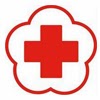Home
» Acne Treatment
» Antibiotics
» Medicine Acne
» List of the Best Antibiotics for Acne Treatments
List of the Best Antibiotics for Acne Treatments
Acne treatments work by reducing oil production, speeding up skin cell turnover, fighting bacterial infection, reducing the inflammation or doing all four. With most prescription acne treatments, you may not see results for four to eight weeks, and your skin may get worse before it gets better.
Your doctor or dermatologist may recommend prescription medication you apply to your skin (topical medication) or take by mouth (oral medication). Oral prescription medications for acne should not be used during pregnancy, especially in the first trimester.
Types of acne treatments include:
Over-the-counter topical treatments. Acne lotions may dry up the oil, kill bacteria and promote sloughing of dead skin cells. Over-the-counter (OTC) lotions are generally mild and contain benzoyl peroxide, sulfur, resorcinol, salicylic acid or sulfur as their active ingredient. This product can be helpful for very mild acne. OTC acne medicines may cause side effects early - such as skin irritation, dryness and flaking - which often improves after the first month of therapy.


While antibiotics are often used to treat acne problems are:
- Tetracycline - The most widely prescribed antibiotic for acne, the dose given increasingly decreased with decrease in acne lesions were seen. But these antibiotics should not be given to pregnant women or children under the age of 9 years.
- Erythromycin - These antibiotics have anti-inflammatory properties that help reduce the redness of the lesion (wound) and kill acne bacteria. Given dose varies depending on the type used. But antibiotics can cause abdominal pain and nausea.
- Minocycline - This is a derivative of the antibiotic tetracycline that has been used effectively as a treatment for acne. Initial dose given is usually 50-100 mg per day. But the side effects that arise usually occurs skin discoloration and teeth if consumed for a long period.
- Penicillin - Penicillins or beta-lactam antibiotics are a class of antibiotics that destroy the cell walls of bacteria when the bacteria are in the process of reproduction. Penicillin is a bactericidal agent group consisting of penicillin G, penicillin V, ampicillin, ticarcillin, cloxacillin, oxacillin, amoxicillin, and nafcillin. Antibiotics are used to treat infections associated with skin, teeth, eyes, ears, respiratory tract, etc.. Some people may be allergic to penicillin with complaints of rash or fever due to hypersensitivity to antibiotics. Often penicillin was given in combination with various other types of antibiotics.
- Cephalosporin - Cephalosporins, such as penicillin, works by interfering with the formation of the bacterial cell wall during reproduction. However, these antibiotics are able to treat a variety of bacterial infections that can not be treated with penicillin, such as meningitis, gonorrhea, etc.. In cases where people are sensitive to penicillin, the cephalosporin can be given as an alternative. However, in many cases, when a person is allergic to penicillin, then most likely he will be allergic to cephalosporins as well. Rash, diarrhea, abdominal cramps, and fever are the side effects of these antibiotics.
- Aminoglycoside - These antibiotics inhibit bacterial protein formation. Because effective in inhibiting bacterial protein production, given, among other aminoglycosides for treating typhoid and pneumonia. Although effective in treating bacteria that cause infections, there is a risk of bacteria increasingly resistant to these antibiotics. Aminoglycosides are also given in combination with penicillin or cephalosporin. Aminoglycosides effectively control and treat bacterial infections, but potentially debilitating kidney and liver function.
- Macrolides - Just as before, these antibiotics interfere with bacterial protein formation. Macrolides prevent bacterial protein biosynthesis and is usually given to treat patients who are very sensitive to penicillin. Macrolides have a broader spectrum than penicillin and is used to treat respiratory tract infections, gastric tract infections, etc.. Gastrointestinal discomfort, nausea, and diarrhea are some of the side effects of macrolides. In addition, pregnant and nursing women should not take macrolides.
- Sulfonamides - These drugs are effective in treating kidney infection, but unfortunately have harmful effects on the kidneys. To prevent the formation of crystalline drug, the patient should drink large amounts of water. One of the sulfa drugs most commonly used are gantrisin.
- Fluoroquinolones - Fluoroquinolones are the only class of antibiotics that directly stop the synthesis of bacterial DNA. Because it can be absorbed very well by the body, fluoroquinolones can be administered orally. These antibiotics are considered relatively safe and widely used to treat urinary tract infections and respiratory tract. However, fluoroquinolones thought to affect bone growth. That's because, this drug is not recommended for pregnant women or children. Side effects that often arise include nausea, vomiting, diarrhea.
Best Antibiotics for Acne Treatments
Hopefully with the list of drugs for the treatment of acne antibiotoc this, you can use to treat your acne. hopefully pimples disappear fast.

This post was written by: Acne Fajar
The best acne treatment with natural medicine Acne Fajars together, sharing information about the treatment of acne and acne scars with proper and efficient. Thanks to visiting List of the Best Antibiotics for Acne Treatments.
Subscribe to:
Post Comments (Atom)












2 Responses to “List of the Best Antibiotics for Acne Treatments”
January 24, 2019 at 12:47 PM
I would like to thank you for the efforts you have made in writing this article. I am hoping the same best work from you in the future as well. Thanks... http://hairstylesg.com
June 3, 2019 at 3:00 AM
Hi, Good information.
we provide our patients with the acne laser treatment or the skin laser treatment to get rid of the acne that is a sort of stigma on their beauty.
Vernon Skin Clinic:
Acne treatment or removal
Acne doctor in Banjara hills Hyderabad
Acne whitehads
Acne Blackheads
Book Doctor Appoinment
Post a Comment